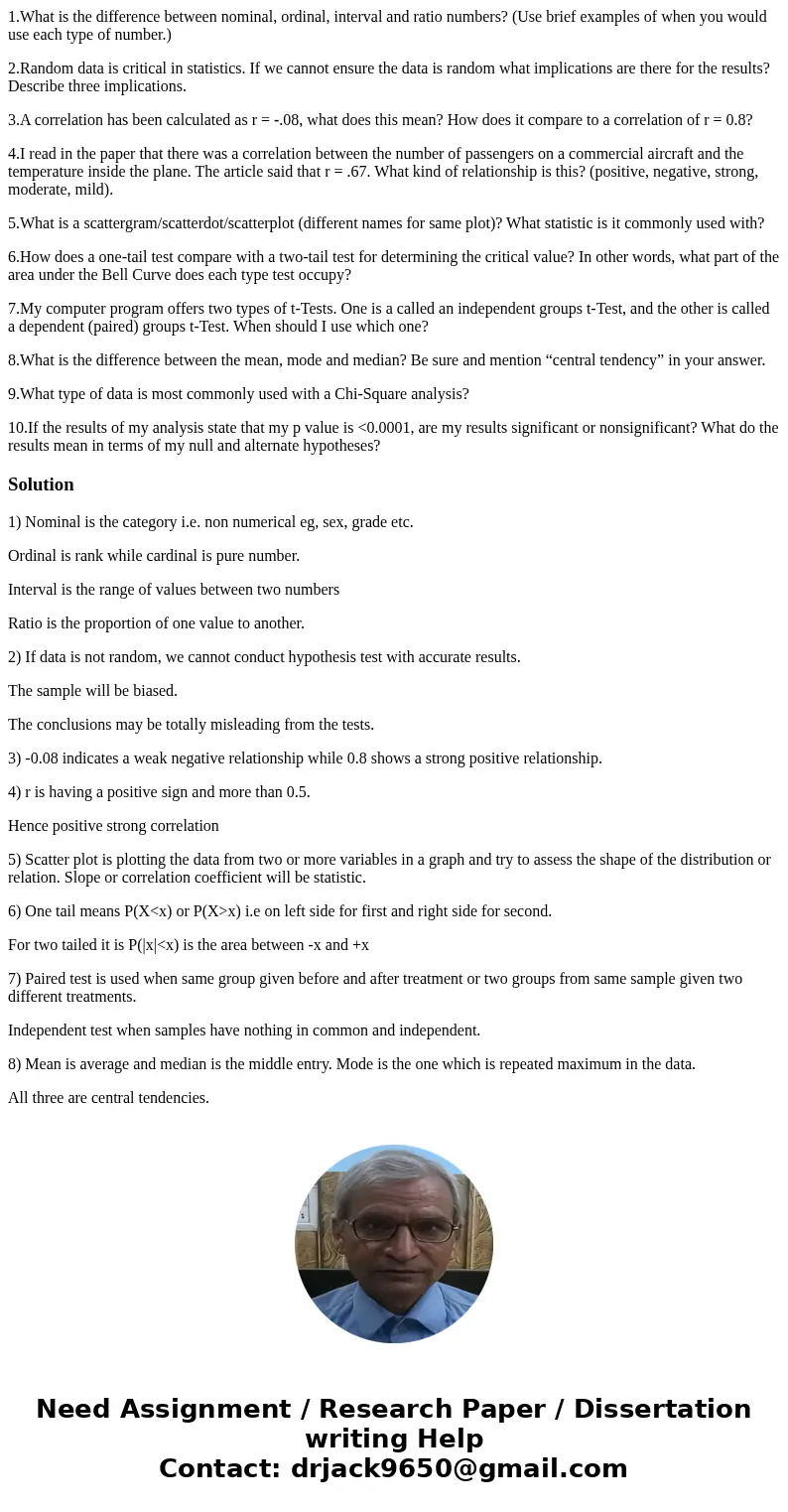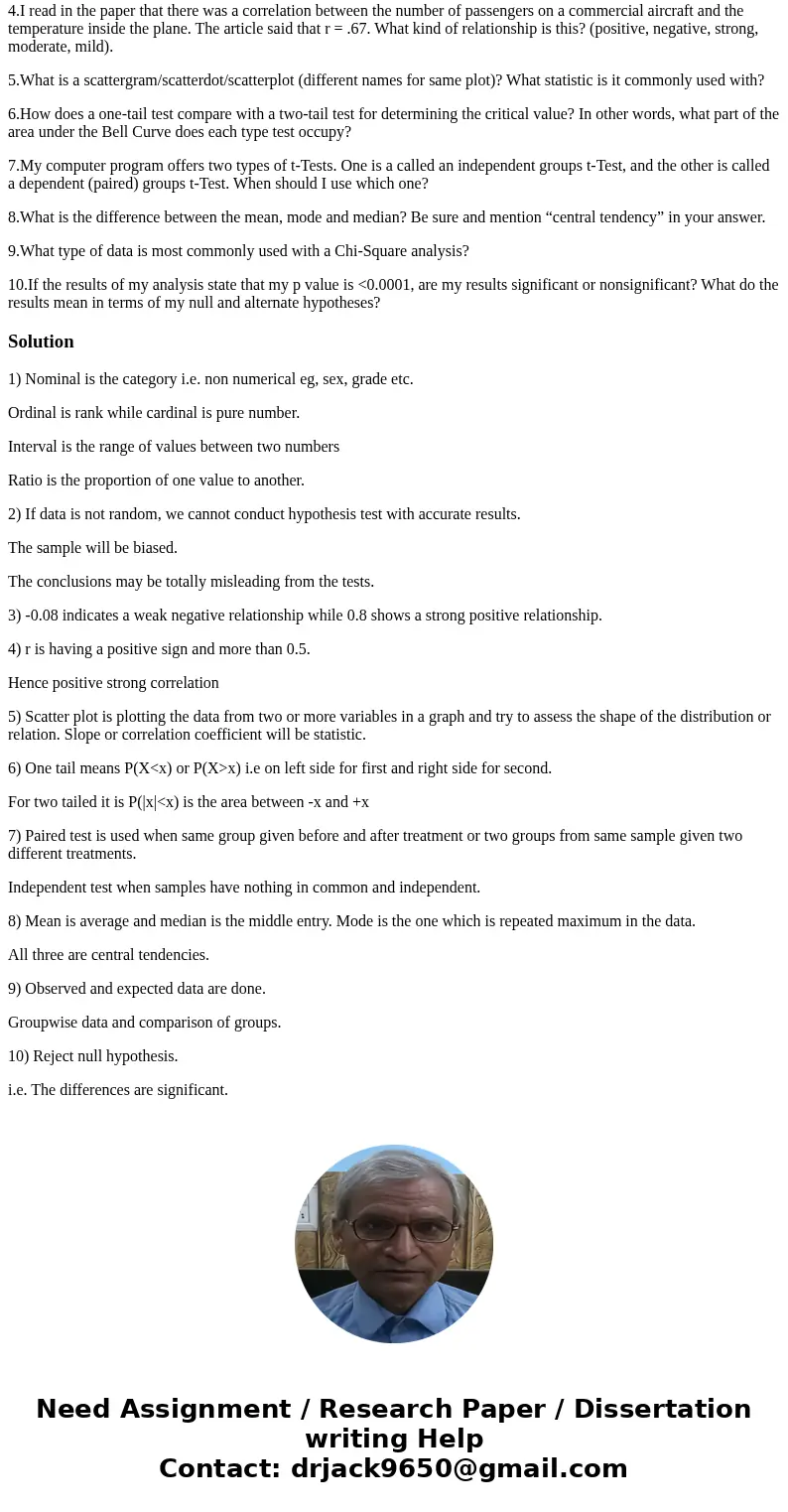1What is the difference between nominal ordinal interval and
1.What is the difference between nominal, ordinal, interval and ratio numbers? (Use brief examples of when you would use each type of number.)
2.Random data is critical in statistics. If we cannot ensure the data is random what implications are there for the results? Describe three implications.
3.A correlation has been calculated as r = -.08, what does this mean? How does it compare to a correlation of r = 0.8?
4.I read in the paper that there was a correlation between the number of passengers on a commercial aircraft and the temperature inside the plane. The article said that r = .67. What kind of relationship is this? (positive, negative, strong, moderate, mild).
5.What is a scattergram/scatterdot/scatterplot (different names for same plot)? What statistic is it commonly used with?
6.How does a one-tail test compare with a two-tail test for determining the critical value? In other words, what part of the area under the Bell Curve does each type test occupy?
7.My computer program offers two types of t-Tests. One is a called an independent groups t-Test, and the other is called a dependent (paired) groups t-Test. When should I use which one?
8.What is the difference between the mean, mode and median? Be sure and mention “central tendency” in your answer.
9.What type of data is most commonly used with a Chi-Square analysis?
10.If the results of my analysis state that my p value is <0.0001, are my results significant or nonsignificant? What do the results mean in terms of my null and alternate hypotheses?
Solution
1) Nominal is the category i.e. non numerical eg, sex, grade etc.
Ordinal is rank while cardinal is pure number.
Interval is the range of values between two numbers
Ratio is the proportion of one value to another.
2) If data is not random, we cannot conduct hypothesis test with accurate results.
The sample will be biased.
The conclusions may be totally misleading from the tests.
3) -0.08 indicates a weak negative relationship while 0.8 shows a strong positive relationship.
4) r is having a positive sign and more than 0.5.
Hence positive strong correlation
5) Scatter plot is plotting the data from two or more variables in a graph and try to assess the shape of the distribution or relation. Slope or correlation coefficient will be statistic.
6) One tail means P(X<x) or P(X>x) i.e on left side for first and right side for second.
For two tailed it is P(|x|<x) is the area between -x and +x
7) Paired test is used when same group given before and after treatment or two groups from same sample given two different treatments.
Independent test when samples have nothing in common and independent.
8) Mean is average and median is the middle entry. Mode is the one which is repeated maximum in the data.
All three are central tendencies.
9) Observed and expected data are done.
Groupwise data and comparison of groups.
10) Reject null hypothesis.
i.e. The differences are significant.


 Homework Sourse
Homework Sourse